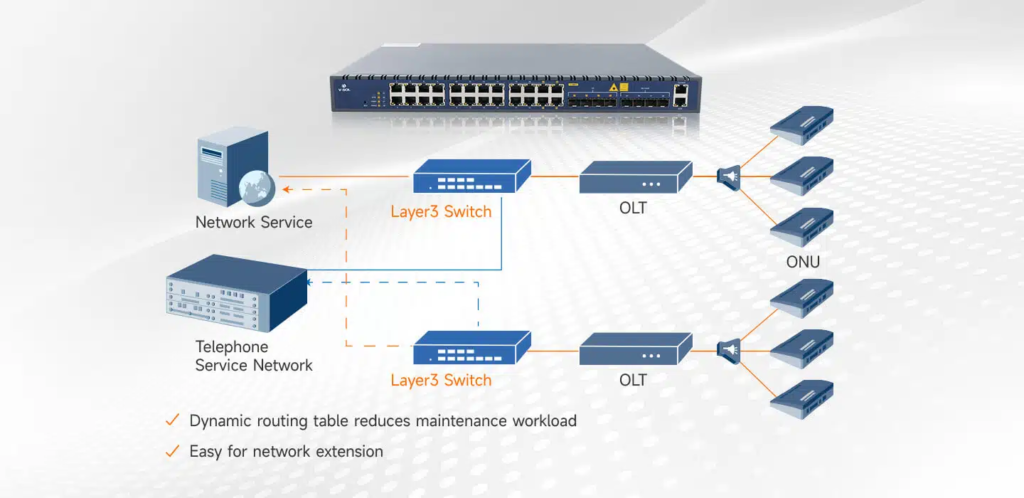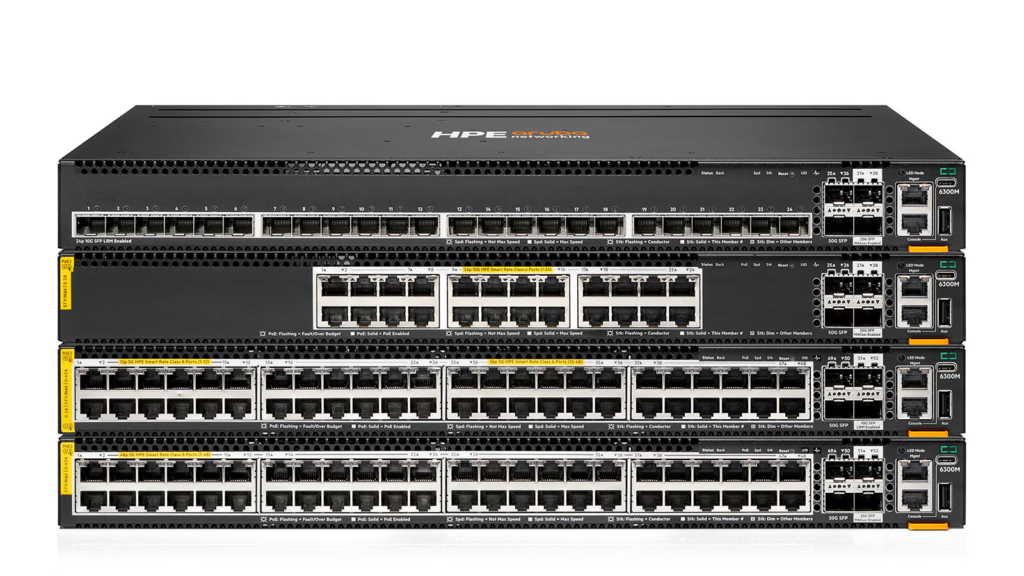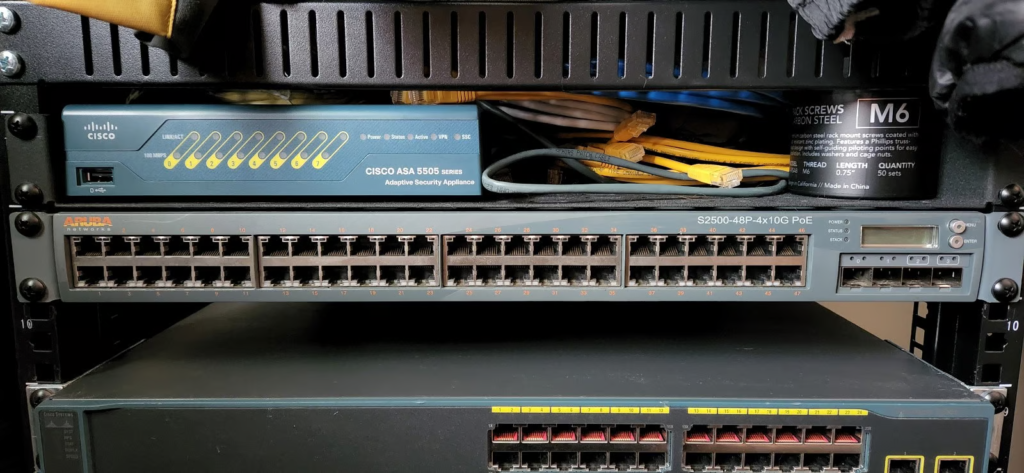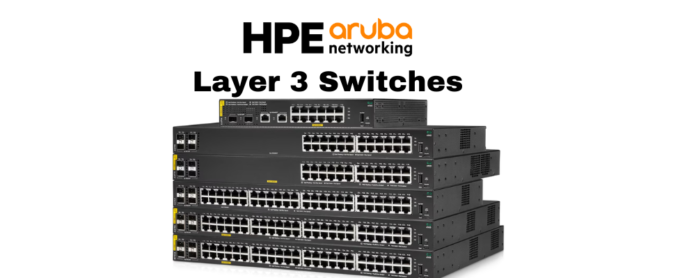Building an exceptionally scalable, efficient networking is greatly determined by the kind of switches selected. Amid myriad options, the Aruba layer 3 switches rank rightly among the best switch types for larger networks. It does not matter whether you are extending an existing network or designing a new one; they come with a number of features that make them best suited for managing traffic, optimizing performance, and ensuring reliability.
What Are Layer Switches?
To know why Aruba Layer 3 switches are the prime option, one must understand what Layer 3 switching is. Layer 3, that is, network layer is when you are routing according to the OSI (Open Systems Interconnection) model. While operating at Layer 2 switches are working at data link level and maintain traffic within a single network segment, Layer 3 switches work between different network segments in routing traffic from there. Thus, in addition to switching, they offer routing functionalities to more effectively combat the need of large, complex networks.

1. Enhanced Traffic Management on Between Network Segments
Perhaps Layer 3 switching is one of the best features of the Aruba, as it enhances traffic between network segments. A big corporate network often contains several VLANs to segment traffic based on departments, functions, or other criteria. A Layer 3 switch would expect immediate routing between these VLANs, which means that there would be seamless data flow without overburdening the network.
Layer 3 switches from Aruba have strong routing capabilities that allow static routing, dynamic routing (OSPF, BGP), and policy-based routing. With these, network administrators can specify how traffic is routed between VLANs in a way that increases the speed and reliability of the entire network.
2. Scalability and Performance
One of the concern factors while designing an extensive network is scalability. Aruba Layer 3 switching further scales with the network while permitting numbers of devices and traffic in the range of high-low performance. The switches ensure higher speed routing and low latency communication, making them fulfilling in enterprise environments with the prerequisite of large-scale data flow.
In terms of performance, associated Aruba switches have more enhanced parameters such as QoS and traffic prioritization that guarantee critical applications get the bandwidth they need, while normal traffic gets deprioritized. This ensures that the network remains continuously fast and unaffected, even as it is being brought to scale.
3. Simplified network management
With an increasing number of devices and segments, the task of managing a large network becomes more complex. The Aruba Layer 3 switches help resolve this problem via powerful management tools such as Aruba Central, which allows network administrators to manage switches, monitor traffic, and troubleshoot all from one central interface. With a cloud-based, user-friendly interface, Aruba makes it easy to configure, monitor, and maintain the Layer 3 network, regardless of the size and dispersion of the network.

Besides that, Aruba’s integration with automated network technologies lends itself to minimizing the time and effort required to perform manual configurations. These technologies further simplify the processes for configuring VLANs, enforcing security policies, and scaling network infrastructures.
4. Security Features Upgraded
Security is another important consideration in the design of any large network. Aruba Layer 3 switches provide strong security against external and internal threats to your network. These features include embedded firewalls, access control lists (ACLs), and 802.1X authentication for port security. Through these features, administrators can enforce strict access policies, ensuring that only an authorized device can communicate across the network.
In addition, Aruba switches allow secure management protocols (SSH and HTTPS) for remote configuration and monitoring of the network administration. Also, Aruba’s Secure Connect technology secures data in the transport layer, which protects sensitive information in any large, distributed environments.
5. Ensuring reliability and redundancy
WHEN BUILDING A LARGE NETWORK, DOWNTIME CAN BE COSTLY, AND NETWORK FAILURE MUST BE MINIMIZED WHILE BUILDING THE NETWORK. Aruba Layer 3 switches are built with high availability and redundancy in mind. These provide link aggregation, Virtual Router Redundancy Protocol (VRRP), and multiple options for power supplies, all to keep the network operational during various failures.
Aruba switches provide advanced redundancy features to minimize the risk of downtime, such that your network remains up and running as your growing business demands more capacity.
6. Seamless Integration with Existing Infrastructure

Aruba Layer 3 switches are seamlessly integrated with the existing network infrastructure. Whether combining Layer 3 switches into an existing Layer 2 network or deploying a full-fledged Layer 3 routing solution, Aruba provides that flexibility to ensure that this is made easy. Moreover, Aruba’s switches are well integrated with several third-party hardware and software options, which broadens their options for many organizations.
Conclusion: Why Use Aruba Layer 3 Switches?
Aruba Layer 3 switches are the ultimate remedy for establishing an ultra-expansive and scalable yet secure network. The switches are characterized by their traffic-handling capability across any segments of the network together with performance, ease of manageability, and strong security features. That turns them into an ideal choice for enterprises with regard to building a reliable network infrastructure that can expand with the organization’s business.
The company is rest assured that the network will be able to meet all current demands and club on future growth through an effortless scaling process. Whether hundreds of devices are being managed or vast networks are being spread among multiple locations, Aruba’s Layer 3 might be the key to getting a reliable, performant, and easy-to-manage enterprise-grade network of lasting quality.




We recently expanded our campus network and chose Aruba Layer 3 switches based on the insights from this blog—and it was the right call. The post perfectly explained the balance of performance, scalability, and ease of management Aruba offers. The built-in routing features and simplified network segmentation have made our job much easier. Plus, the intuitive Aruba Central platform is a huge bonus for monitoring and updates. This blog helped validate our decision and gave us confidence in our investment.